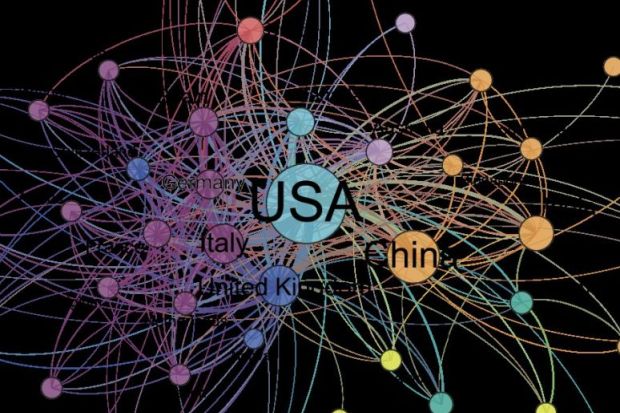US science is being rivalled and even overtaken by China and other nations on some major measures but it remains the vital centre of global exchange, the National Science Foundation said in a biennial assessment.
The NSF report is a sweeping collection of worldwide science and engineering data, and it affirms the trend in recent years of the US growing on most key measures yet still losing ground, mostly to China.
But the NSF, citing Covid research as a particularly recent and prominent example, portrayed US scientists as the clear leader when looking at numbers of published papers and their collaborative partnerships.
The US is “a central nexus that is instrumental to the structure and success of the global science and engineering ecosystem”, said the lead author of the analysis, Julia Phillips, chair of the science and engineering policy committee of the NSF’s governing board.
And to the degree that the US bears a serious risk of losing that “keystone” role in the world, the NSF board blamed the country’s ongoing failure to spread science opportunities throughout its growing non-white population, as well as its faltering commitment to welcoming foreign talent.
The domestic inequality in the US starts at pre-college levels, where race-based performance gaps in science are pronounced and US students overall perform barely above the average of those in the developed nations of the Organisation for Economic Cooperation and Development, the NSF board said among its data summaries.
The US still leads the world in science doctorates, although China and India are growing fast, as they already lead in degrees at undergraduate level. The US remains the top destination for foreign students, but that lead is also shrinking. And the US is still by far the world leader in expenditure on basic research, outspending China threefold, but it is seeing declines in the government-funded share, which is regarded as most critical to long-term innovation.
“The US can continue to lead for the decades to come – if we take action now,” the NSF’s governing body, the National Science Board, said in its report.
The report did show the US widening its advantage over China for the top spot in overall research and development spending. The US led by 25 per cent to 23 per cent of global totals in the 2017 figures cited in the 2020 NSF report, whereas it leads China by 27 per cent to 22 per cent in the 2019 figures in this year’s version. But the NSF mostly attributed that shift to improvements in measurement metrics that allow for more direct comparisons between countries.
And the US business sector was the nation’s main driver of improvement in total research and development spending, accounting for about 83 per cent of the growth from 2010 to 2019, the NSF report said. The overall share of research funded by the government – often performed at universities – has declined in the US over the past nine years, it said.
The US Congress is still working out details for science funding in the 2022 fiscal year that began last October, with spending frozen at 2021 levels in the meantime. Preliminary versions of the federal budget show plans for significant increases in most research accounts, in addition to a separate bill with broad political support that would spend $26 billion (£19 billion) over five years to establish a new NSF division focused on commercialising the development of scientific discoveries.
Register to continue
Why register?
- Registration is free and only takes a moment
- Once registered, you can read 3 articles a month
- Sign up for our newsletter
Subscribe
Or subscribe for unlimited access to:
- Unlimited access to news, views, insights & reviews
- Digital editions
- Digital access to THE’s university and college rankings analysis
Already registered or a current subscriber? Login







